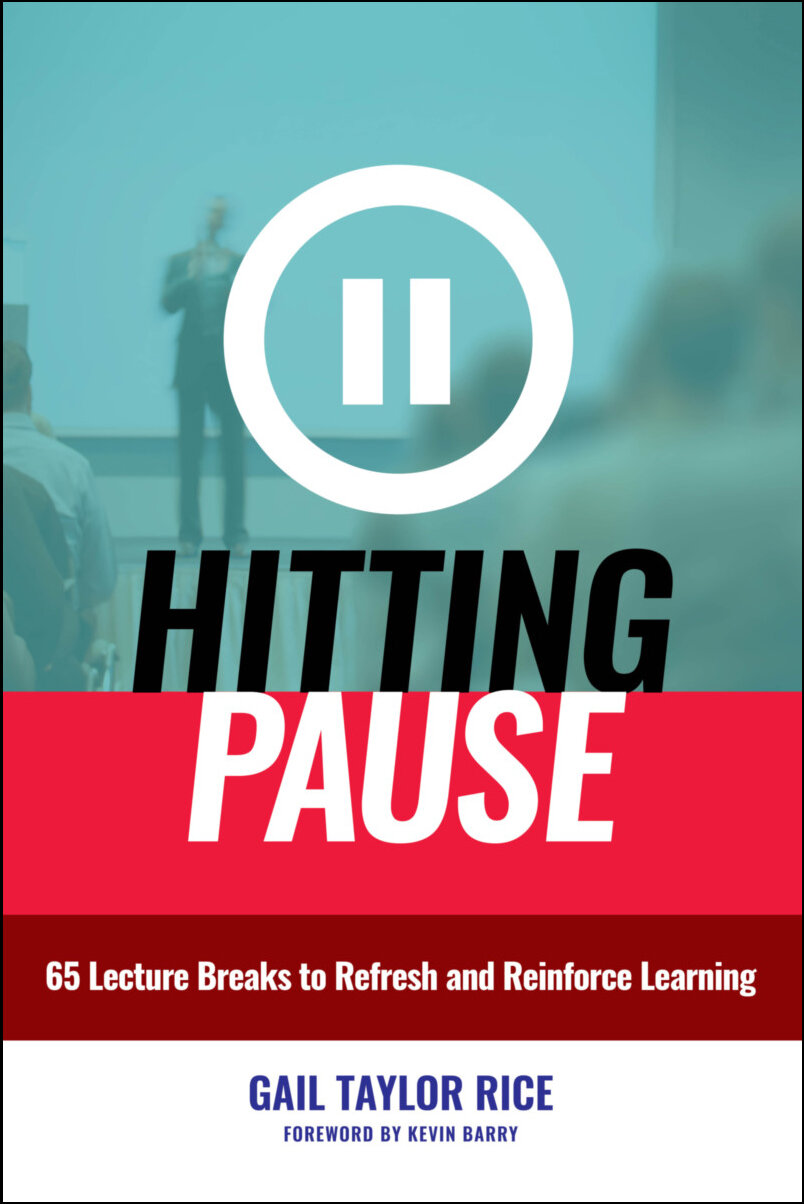Hitting Pause
In Winter 2018, I taught Gender and Diversity, an introductory Gender and Women’s Studies course here at Dal. We met twice a week in Ondaatje Theatre, a 495-capacity auditorium in the McCain building. Day one, my 200 students found a spot in the auditorium and sat, facing forward, in seats bolted to the floor. Many prepared for my lecture by getting out notebooks or readying their computers with a blank Word document.
But I did not lecture that day… nor any other day that semester. Instead, I chose to use pedagogical strategies grounded in active learning. My hope was this student-centred practice would allow my students to engage with course content – beyond passive listening and recall of information – and use it to construct their own knowledge and understanding (Hammer, & Giordano, 2012). I knew active learning, as opposed to more traditional teaching approaches, had the potential to improve my students’ engagement and achievement of learning outcomes (Armbruster, Patel, Johnson, & Weiss, 2009; Hyun, Ediger, & Lee, 2017; Weasel & Finkel, 2016).
The first day of class, I talked with my students about active learning, and assigned their first Application, Reflection, or Investigation Activity (ARIA), which asked them to take (or find) a photograph that represented ‘diversity.’ We used their submissions to launch into a semester of learning, full of activities that asked them to apply, reflect on, or investigate further the class content.
In response to readings, handouts, short presentations, and videos, students engaged in in-class activities where they wrote poems, analyzed diagrams, had small and large group discussions, curated media, and more. Although I felt implementing active learning was successful and the right choice for me and my students, conceiving of these 20 classroom activities was a daunting task that took a lot of effort and time.
Fortunately, with the 2018 publication of Hitting Pause: 65 Lecture Breaks to Refresh and Reinforce Learning by Gail Taylor Rice, now instructors can integrate active learning into their classes quickly and easily, without rewriting their lectures, redesigning their course, switching pedagogical approaches, or reworking PowerPoint presentations.
The book proposes instructors insert pauses into lectures at key points – at the beginning, halfway through, or at the end of a class session. These pauses allow students to engage with lecture content through small-group discussion, application, analysis, collaboration, or reflection, while giving the instructor a minute or two to catch their breath, gather their thoughts, or look over their notes.
The first part of the book introduces the concept of pausing. The second part delves into the cognitive science behind learning and the benefits of breaking lectures into smaller chunks through pauses. Part three includes classroom narratives that illustrate use of the Starting Pause, Midpause, and Closing Pause.
The remainder of the book (more than half of the total pages) is appendices that detail 65 pausing techniques, including ones named Twitter Start; Dump Bucket; Quiz, Quiz, Trade; and Tic-Tac-Know. Each pause featured in the appendix includes an introduction, ideal classroom setting, the process for using the pause, suggestions for implementation, ideas for adapting to online instruction, and related references.
If you’ve been wanting to integrate active learning into your lecture-based course, without redesigning it from scratch, I highly recommend you flip through Hitting Pause (Rice, 2018) for some easy-to-implement ideas.
References
Armbruster, P., Patel, M., Johnson, E., & Weiss, M. (2009). Active learning and student-centered pedagogy improve student attitudes and performance in introductory biology. CBE Life Sciences Education, 8(3), 203-213.
Hammer, E. Y., & Giordano, P. J. (2012) Active learning. In W. Buskist, & V. A. Benassi (Eds.), Effective college and university teaching: Strategies and tactics for the new professoriate (pp. 99-106). Los Angeles, CA: Sage.
Hyun, J., Ediger, R., & Lee, D. (2017). Students’ satisfaction on their learning process in active learning and traditional classrooms. International Journal of Teaching and Learning in Higher Education, 29(1), 108-118.
Rice, G. T. (2018). Hitting pause: 65 lecture breaks to refresh and reinforce learning. Sterling, VA: Stylus Publishing.
Weasel, L. H., & Finkel, L. (2016). Deliberative pedagogy in a nonmajors biology course: Active learning that promotes student engagement with science policy and research. Journal of College Science Teaching, 45(4), 38-45.
